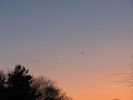



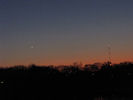
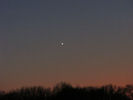

I took these photos of Venus as it emerged away from the solar glare on December 31, 2014 looking above Black's Creek which is near the Wollaston Beach area in Quincy, MA. Click on images
to enlarge.







December 31, 2014 - Only the planet Venus was found.


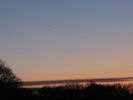

January 1, 2015 - Mercury now visible to the lower right of the planet Venus.
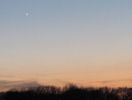

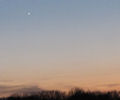
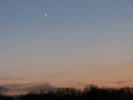
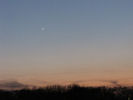
January 2, 2015 - Mercury now visible to the lower right of the planet Venus and a little closer to Venus than the previous day.


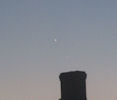
January 8, 2015 - Mercury still to the lower right of the planet Venus and quite close to Venus.


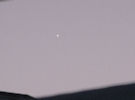


January 9, 2015 - Mercury still to the lower right of the planet Venus and somewhat closer to Venus than on January 8th.

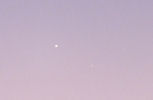

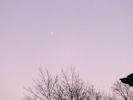
January 10, 2015 - Mercury still to the lower right of the planet Venus and somewhat closer to Venus than on January 9th. I was able to see both Mercury and Venus in the same telescope field using my Meade ETX-125 telescope at ~48x. The two planets are supposedly at their closest during this near-conjunction.
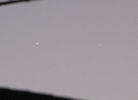

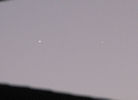

January 13, 2015 - Mercury to the right of the planet Venus and further from Venus than on January 9th.
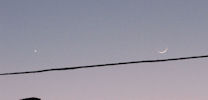
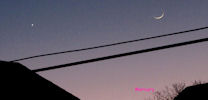

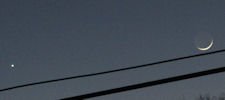
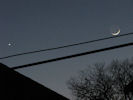
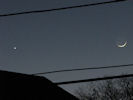

January 21, 2015 - The crescent Moon to the right of the planet Venus. The planet Mercury is only visible in the second photo from the left, located below the Moon.
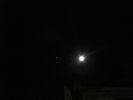
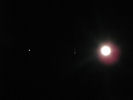

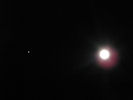
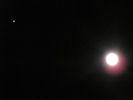

February 3, 2015 - The nearly full Moon to the right of the planet Jupiter.
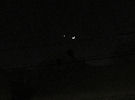
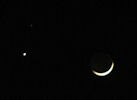
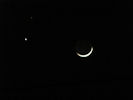

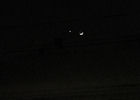
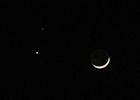
February 20, 2015 - The thin crescent 2-day old Moon to the right of the planets Venus and Mars. Mars is the much fainter "star" right above Venus

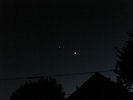



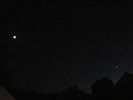
June 25, 2015 - The planets Venus and Jupiter were just a few degrees apart en route to a very close June 30, 2015 conjunction.
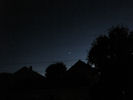
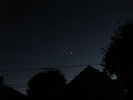
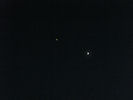
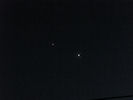
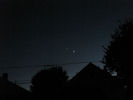
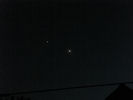
June 26, 2015 - The planets Venus and Jupiter were getting a little closer en route to a very close June 30, 2015 conjunction.

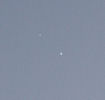

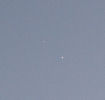
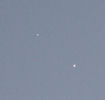

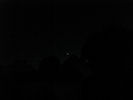

June 29, 2015 - The planets Venus and Jupiter were a little less than a degree apart one night before the very close June 30, 2015 conjunction.
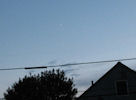
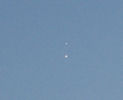
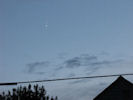
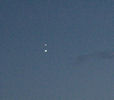
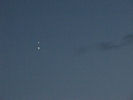

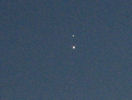

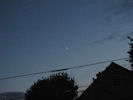

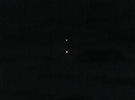

June 30, 2015 - The planets Venus and Jupiter were less than a half degree apart during this conjunction.
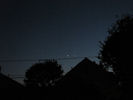

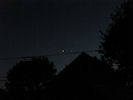
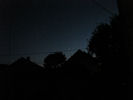
July 4, 2015 - The planets Venus and Jupiter were still just a few degrees apart four nights after the very close June 30, 2015 conjunction.
I also found Comet Lovejoy, first with my Tasco 7x50 binoculars from Arlington Heights, MA on December 30, 2014; then with my Celestron 15x70 binoculars on December 31, 2014
and on January 1, 2015. The comet was in the southeastern part of the constellation Lepus which is directly south of Orion. The comet looked like a fuzzy blob of light with only
a faint hint of a tail as viewed using both binoculars. I am surprised that I found the comet this easily because of light pollution in metro Boston, MA and because the Moon was
getting closer to full phase and to the comet during this time period. I found the comet again at about 7:15 PM on January 10, 2015 using my Tasco 7x50 binoculars. The comet
appeared as a fuzzy blob with faint hints of elongation and/or a tail. The comet was located in a star-poor region in the constellation Taurus about 27 deg west of Betelgeuse.
Because the comet has moved north and west over the past week and a half and because the Moon was rising later as it has gone well past full phase, the comet is higher in the sky
and was slightly more prominent in binoculars.
Page modified July 7, 2015.